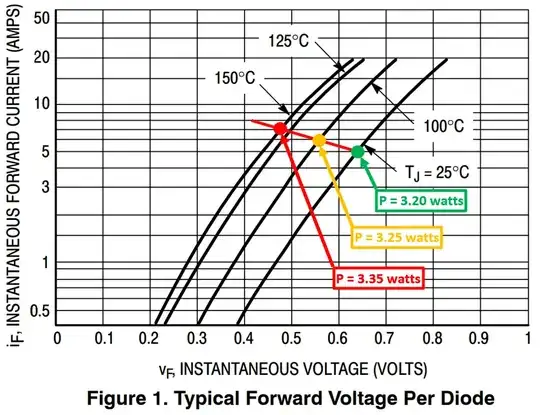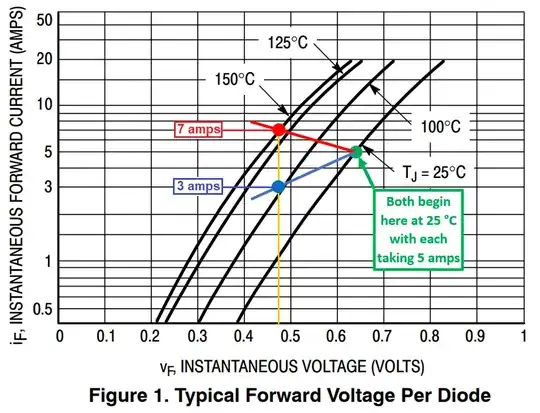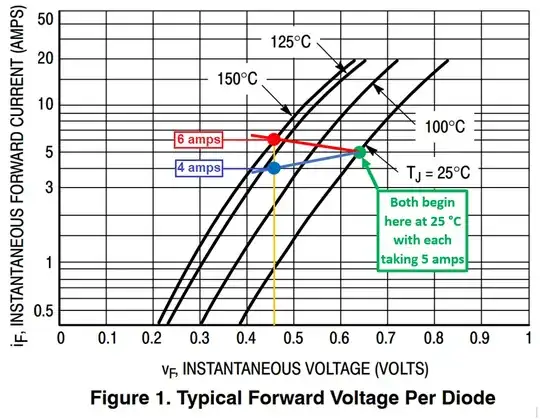Does that mean Onsemi has extra "trickery" in their device to double
the current capacity?
No there is no trickery other than to keep the individual diode junctions thermally connected as much as possible. And, if the data sheet doesn't give assurances about this then, you can't assume that they'll share current at all evenly. What can happen is the following...
As soon as one diode starts taking a little more current than the other, it will heat a little more and, when this happens, it'll take a little more current, warm a little bit more and take a bit more current. Hopefully, you can see where this is going so, maybe look at this modified graph in the data sheet to see what I mean: -

I've drawn a trajectory on the graph that shows a slight tendency for thermal runaway (increasing power dissipation as you move from a 5 amp current on the right to 7 amps on the left).
But, it's tricky to pin-point what trajectory the thermal effects take (as temperature rises from ambient). There may be a net effect that keeps the currents the same or, there may be a net effect that causes a big disparity. To demonstrate this I've chosen the same trajectory in the graph above. That trajectory suggests that as one diode warms, the currents become significantly different and, the final junction temperatures are 150 °C and maybe 105 °C for the two diodes respectively: -

Both diodes begin conducting 5 amps but, over a short-time, one is conducting 7 amps (at a junction temperature of 150 °C) and, the other is conducting 3 amps (at a junction temperature of about 105 °C). The combined current is still 10 amps but, individually they are different.
I can also easily imagine this less problematic scenario: -

How closely the diode junctions are thermally connected is unknown from the data sheet.


